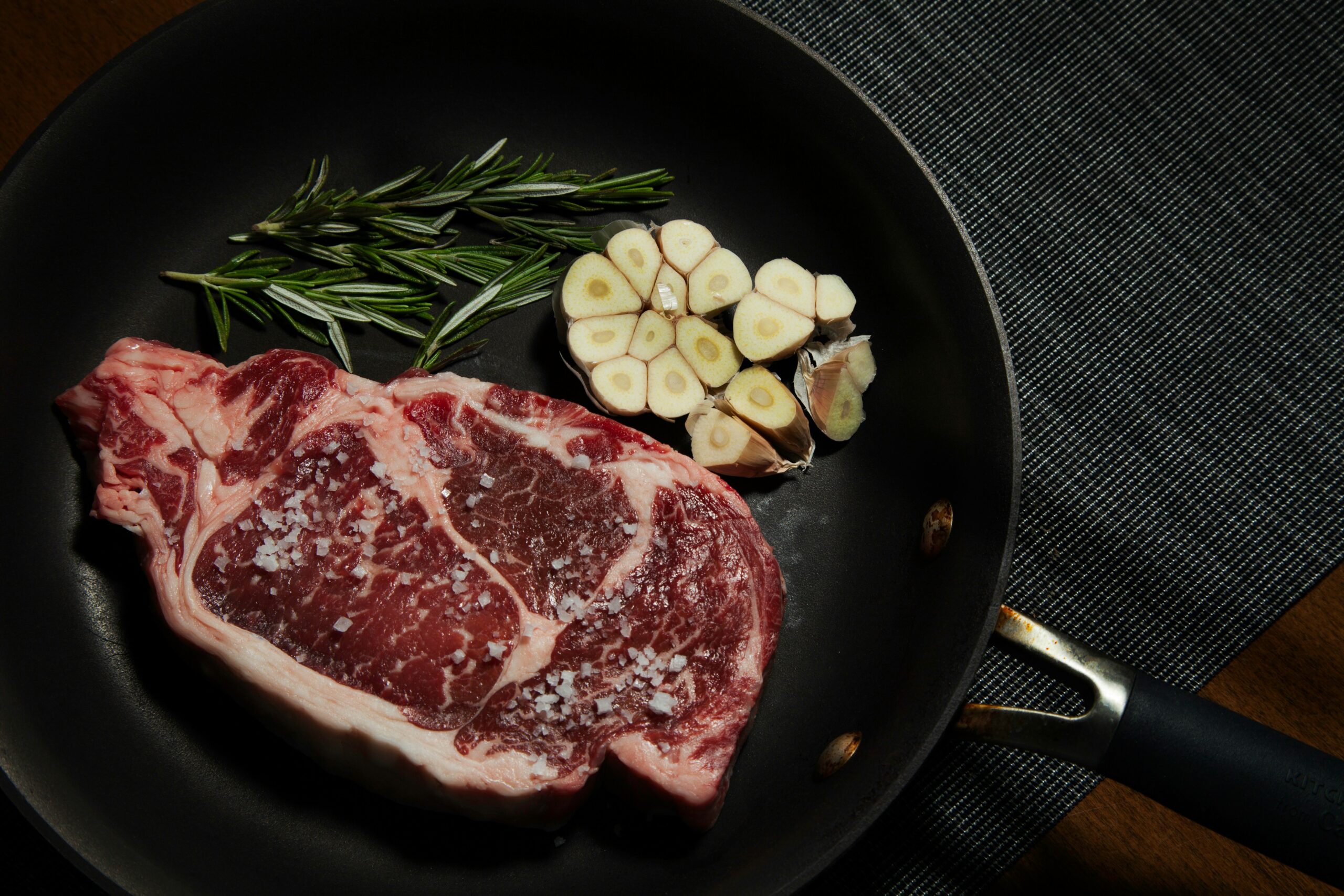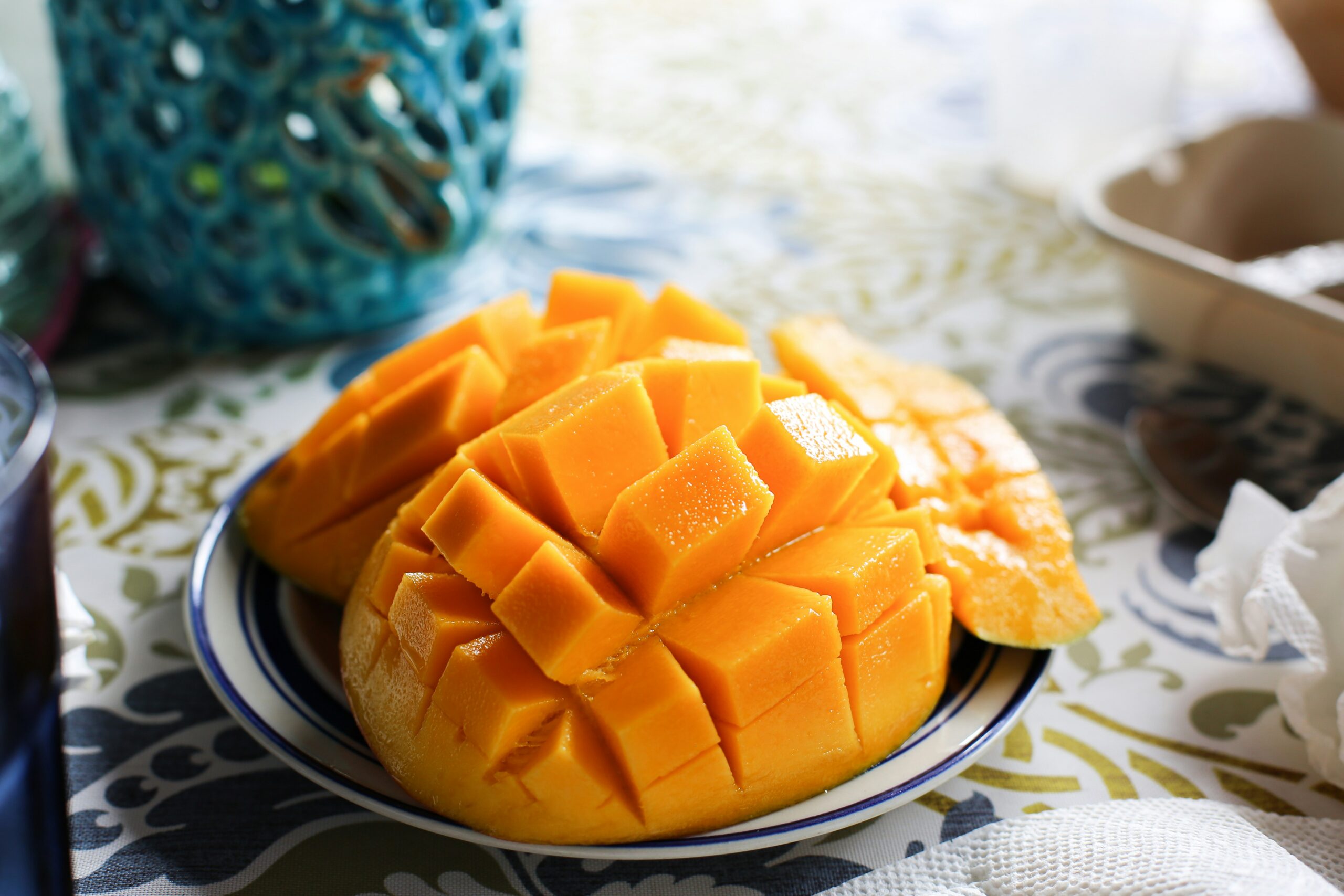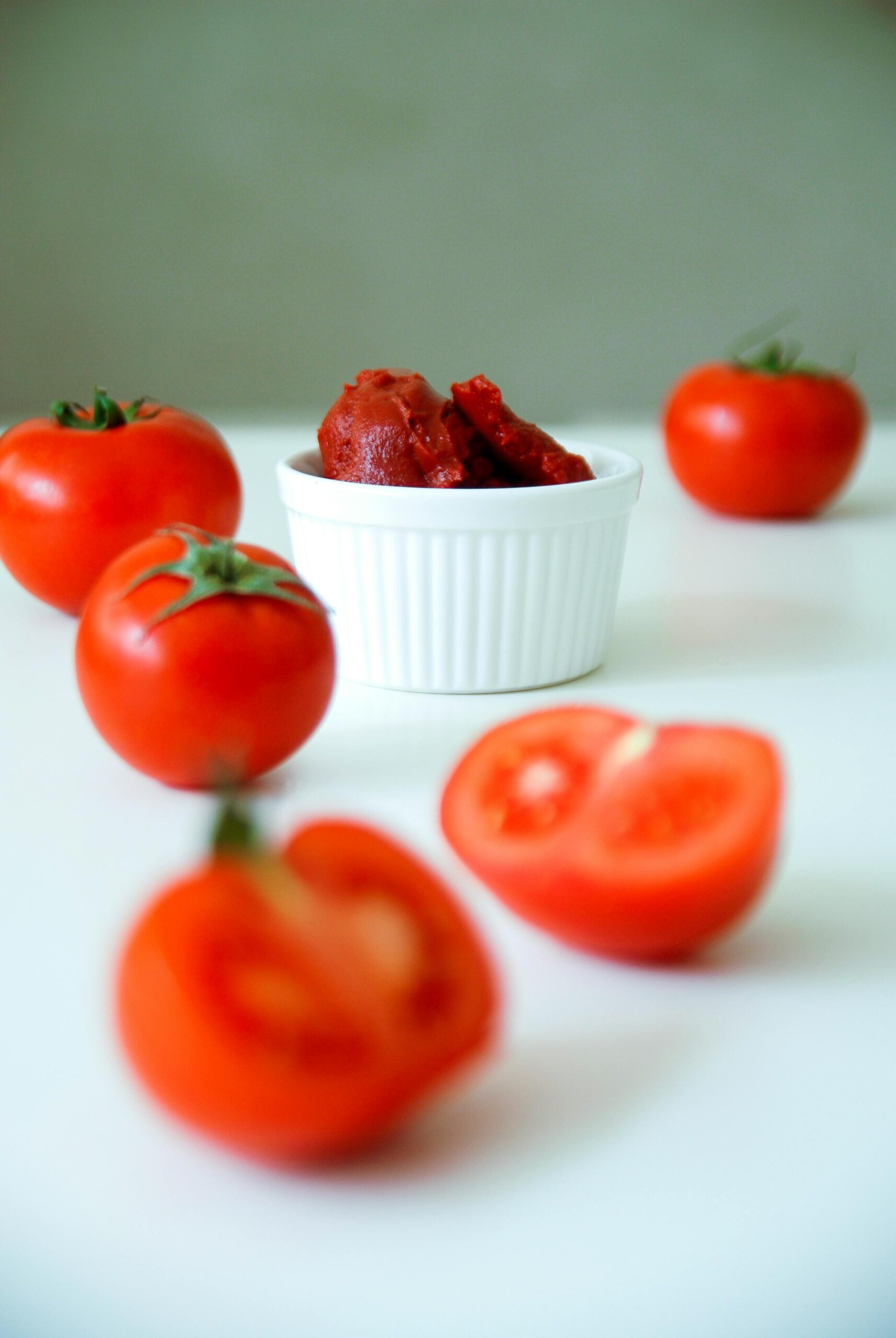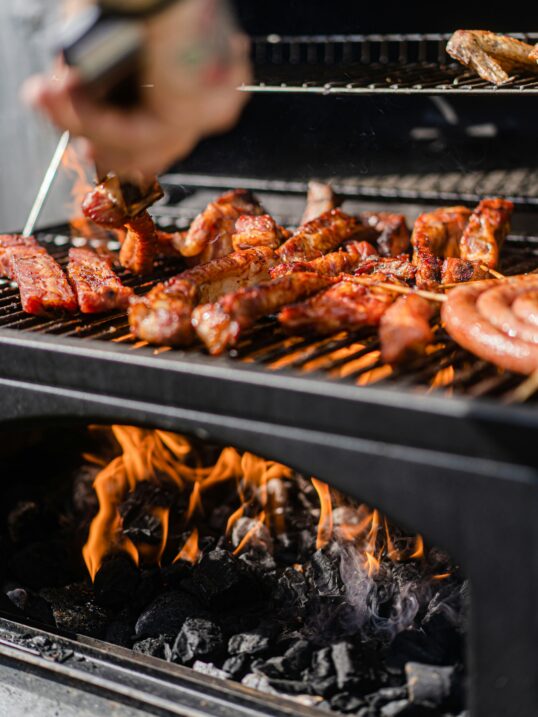Ripe mangoes are characterized by a distinctive sweetness and are incorporated into smoothies, milkshakes, compotes, ice creams, and many more. The tartness of unripe mangoes makes them suitable for salads and curries.
As with other types of fresh fruit, mangoes are prone to over-ripening and spoilage.
Not to worry! Using the information we cover in this article, you will be able to distinguish between ripe mangoes and those on the verge of spoilage.
We will also share a few Insider tricks on how to store mangoes properly so you will hopefully never have to bin another of these summer delights!
How Can I Tell If a Mango is Bad?
You can identify if a mango is spoiled by checking its appearance, smell, and texture. Ripe mangoes have a smooth, firm texture, with a slight give then gently pressed, and produce a sweet, fruity scent.
They usually appear yellow, orange, or red when ripe, although some varieties stay green even after ripening.
Overripe mangoes, by contrast, have a squishy texture and produce an offputting odor that is anything but sweet. They will also have discoloration that gets visibly darker and larger. Let’s look at these factors a tad more closely.
Visual indicators of a bad mango
If a mango appears wrinkled and carries visible dark patches, it is definitely overripe and might be beyond salvaging. However, a few wrinkles might mean the mango is starting to make that transition from ripe to overripe and should be used soon.
Otherwise, it might not be possible to cut up the mango into neat cubes to serve in a salad, although the mango will taste just as good for a few days more and can be consumed as is or added to your favorite breakfast smoothie.
Mangoes that are beginning to ooze and have visible mold growth must be discarded immediately.
Perfectly ripe mangoes have smooth outer skin and may have a few dark spots here and there. This is normal. Unripe mangoes appear green and usually turn yellow, orange, or red on ripening. An exception to this is a Keitt mango that stays green after ripening.
Unless you know the type of mango you are dealing with, you must consider its looks, smell, and feel to get a clearer idea.
How to identify offputting odors
When you sniff near the stem of a ripe mango, it gives off a pleasing, fruity aroma, although this is more pronounced in some varieties than others.
Spoiled mangoes, on the other hand, produce an acidic, sour smell as a result of the natural sugars in the fruit starting to ferment. As this is the beginning of rot, the mango must be discarded.
Texture changes
When you pick up a ripe mango, it should feel smooth and firm, with a little give.
This means if you gently press down on the skin of a mango, preferably near its stem, you can see a slight dimpling that disappears in a second or two. At this stage, the mango is perfectly ripe to eat.
As the mango continues to ripen, it becomes more squishy.
Generally, squishy mangoes are overripe and won’t taste as good as a perfectly ripe one. If the skin of the mango tears when pressed down or if a mango has soft spots, these are signs of the fruit being overripe.
There is no doubt that perfectly ripe mangoes can be relished as is or used for cooking; however, mangoes that tend to be slightly overripe work well in smoothies, curries, chutneys, and recipes that call for pureed mango.
Different Types of Mangoes
There are about 400 listed varieties of mangoes all over the world. Among them, the most popular variants available in the U.S. include Honey, Francis, Haden, Keitt, Kent, and Tommy Atkins.
Honey Mangoes
Mangoes differ by type in their size, appearance, texture, and taste. For instance, Honey or Ataulfo mangoes, popular under the marketing name ‘Champagne’, are small and yellow, with a high flesh-to-seed ratio. Honey mangoes have smooth, firm flesh that tastes sweet and creamy, suitable for eating raw, grilled, or roasted.
Francis Mangoes
By contrast, Francis mangoes have yellow skin with green overtones. The skin gradually turns golden as the fruit ripens. Their flesh has a bright, turmeric color and a fibrous texture. Francis mangoes are sweet with a slight degree of tartness.
Hailed as a harbinger of the mango industry in Florida in the early 20th century (that has since diminished due to climatic conditions and other factors), Haden mangoes are bright red with slight green and yellow overtones. As with most types of mangoes, the green areas turn yellow on ripening. This type of mango has firm flesh with few fibers. Haden mangoes are known for their sweet and floral flavor, although they sometimes leave a mildly bitter aftertaste.
Keitt Mangoes
Keitt mangoes appear green to dark green with an added pink blush when ripe. Their flesh is sweet and juicy with few fibers. Keitt mangoes are larger compared to the Honey and Francis varieties.
Kent Mangoes
Kent mangoes originated in Florida in the 1940s and are ideal for juicing and drying. With green skin and a deep red shade over some areas of the skin, Kent mangoes develop yellow undertones on ripening. This variety of mango has two growing seasons, which means Kent mangoes can be enjoyed in late winter and all through the summer.
Tommy Atkins Mangoes
Among the widely used mango variants, Tommy Atkins stands out for its predominant tartness mixed with mild, sweet notes. This fruit is incredibly fibrous and hence, suitable for use in stews, slow-cooked recipes, and braises. Tommy Atkins mangoes have a dark red blush over most of the fruit with green and yellow overtones.
Expert Tips for Selecting Ripe and Flavorful Mangoes
To select mangoes that are perfectly ripe and bursting with flavor, you need to keep a few things in mind.
The color and appearance of a mango, its firmness and overall texture, as well as its scent, all indicate whether the fruit is mature, ripe, overripe, or spoiled.
Assessing the color and firmness of a ripe mango
Ripe mangoes can be bright yellow or orange all over, or even green with the appearance of a slight pink blush or yellow undertones indicating their ripeness. On the other hand, some varieties are predominantly red with green overtones that take on a yellowish hue when fully ripe.
In addition to color, you must check the firmness of the fruit when purchasing mangoes. Select mangoes that give slightly when gently pressed and don’t have any soft spots or bruises.
Mangoes in a single lot might be at various stages of maturity or ripeness, so be sure to handpick each one.
Using the “sniff test” to determine ripeness
Ripe mangoes emit a scent that can be described as sweet, fruity, and floral. This is due to the production of ethylene, a sweet-smelling compound, which increases as the fruit ripens.
To determine the ripeness of a mango, give it a good sniff around the stem where the scent is strongest.
If a mango smells acidic or sour, it has crossed the stage of perfect ripeness and likely won’t taste good. Some varieties of mangoes produce a stronger scent than others, so you should keep this in mind when using the ‘sniff test’.
Other helpful tricks for choosing the perfect mango
When you select mangoes, avoid ones that look wrinkled or feel squishy to the touch.
If you prefer to ripen the mangoes at home, you should pick ones that are mature and firm. To ripen mangoes, store them in a paper bag. This traps the ethylene gas which in turn hastens the ripening.
Alternatively, you can store mangoes with other ethylene-producing fruits such as apples or bananas to speed up the process. It takes 1-7 days to ripen a mature mango at room temperature, so you should check the fruit daily.
Ripe mangoes can be kept at room temperature for 2-3 days and refrigerated for 5-7 days. In practice, it is best to refrigerate mangoes once they have turned ripe. This slows down the ripening and adds a few more days to the shelf life.
You can refrigerate a whole mango as is without wrapping it or placing it in a separate bag. In the case of peeled or sliced mangoes, make sure to put them in an airtight container before refrigerating.
Cut-up fruit always has a shorter shelf life than unpeeled, uncut fruit.
It is a good idea to freeze mangoes so you can enjoy the fruit even outside mango season. However, by extending its shelf life thus, you do compromise the mango’s texture; the fruit becomes mushy when thawed and therefore, must be used straight from the freezer.
Insider’s Insight
To summarize, never judge a mango by its color (alone)! Always remember to check the fruit for firmness with a slight give and a pleasant, fruity aroma around the stem.
Ripe mangoes vary in color from bright yellow to red or even green with yellow or pink overtones, depending on the variety of the mango.
Some types such as Tommy Atkins and Francis have fibrous flesh, whereas Honey (Ataulfo), Haden, and Keitt have little to no fibers.
Kent mangoes are available across late winters and summers and are best suited for juicing and drying. Honey and Keitt mangoes are predominantly sweet, whereas, Tommy Atkins, Francis, and Haden mangoes have varying levels of tartness mixed with the naturally sweet flavor.
While it is normal for mangoes to have a few dark spots here and there, avoid ones that have big, dark patches, excessive wrinkles, or a squishy texture. T
o enjoy a mango at your desired level of ripeness, purchase a mature fruit and ripen it at home, preferably in the company of apples or bananas. To improve the shelf life of ripe mangoes, you should refrigerate or freeze them.







Leave a Reply